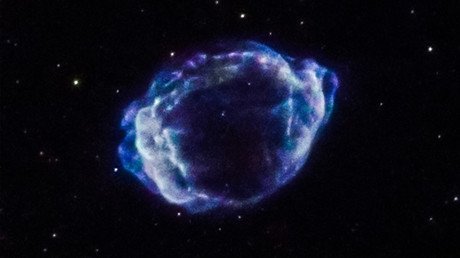‘Very strange’: White dwarf star with 99.9% oxygen atmosphere puzzles scientists

A white dwarf discovered in the constellation of Draco is unique in having an atmosphere dominated by oxygen rather than hydrogen and helium, astronomers reported. The scientists are not sure how this could have happened.
“We only found one, so it is a rare event,” Kepler de Souza Oliveira Filho, an astronomer at the Federal University of Rio Grande do Sul in Porto Alegre, Brazil, told science.com.
Kepler and other authors of a paper about the unusual star, which was published on April 1 in the magazine Science, combed through data collected by the Sloan Digital Sky Survey (SDSS).
A white dwarf is what is left behind by almost any star but the heaviest ones, when it sheds off its outer layers and leaves only the exposed core. Heavier elements like oxygen or carbon sink to the core’s center while the remaining lighter hydrogen and helium floats on the surface. This is for some reason not what happened to the star described in the study.
Located about 1,200 light-years away, its surface is 99.9 percent pure oxygen – a record for oxygen richness – with neon and magnesium coming as distant second and third. The composition of elements is what would be expected to be inside the core of a star with a mass between six and 10 times that of the sun.
But such a star would leave behind a white dwarf about as heavy as the sun, while the newly-discovered dwarf is about 60 percent as heavy. And a star corresponding to the size of the freak dwarf would not have been big enough to fuse its fuel into oxygen.
“You have to wonder where this oxygen even came from," said Kepler.
The scientists consider several theories of how the misfit, which they dubbed Dox, could come into existence. One is that it’s part of a binary system and that its companion had siphoned lighter elements off. Another is that the interaction went the other direction and Dox siphoned matter from its companion and it triggered a thermonuclear explosion, which expelled the outer layers of the dwarf.
“That’s very strange,” said Patrick Dufour, an astrophysicist at the University of Montreal. “It could work, but I doubt it would leave a low-mass white dwarf.”
“There are lots of open questions before we can say that this changes our view of white dwarf evolution,” Dufour added. “This white dwarf might only be a freak… Although often in science, it’s the exception that makes you understand a great deal later on.”













